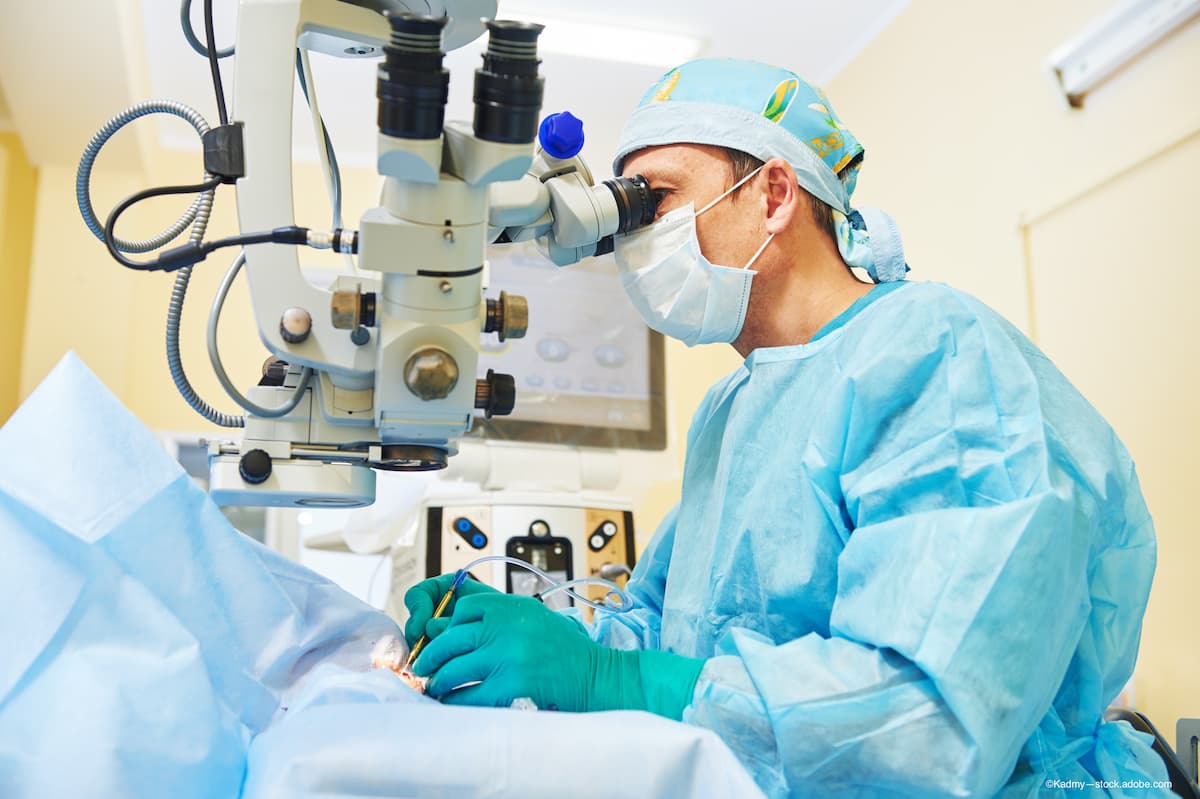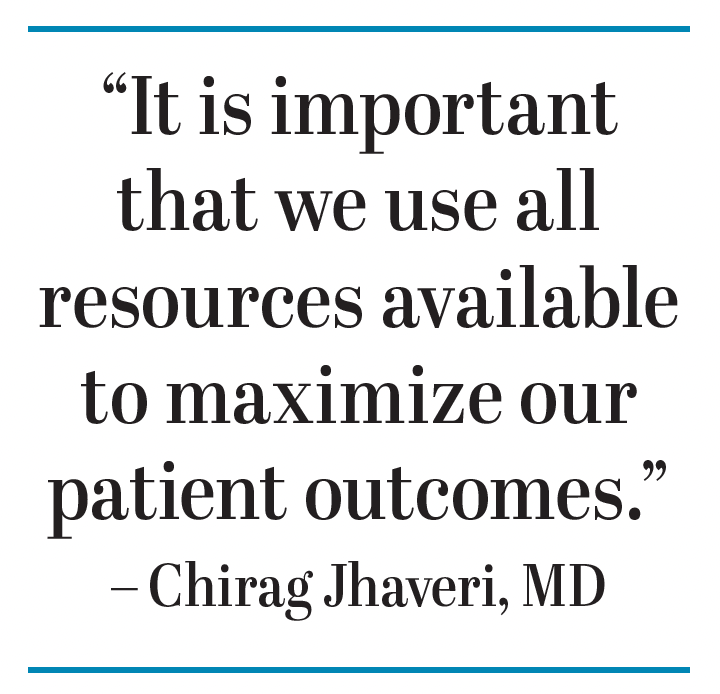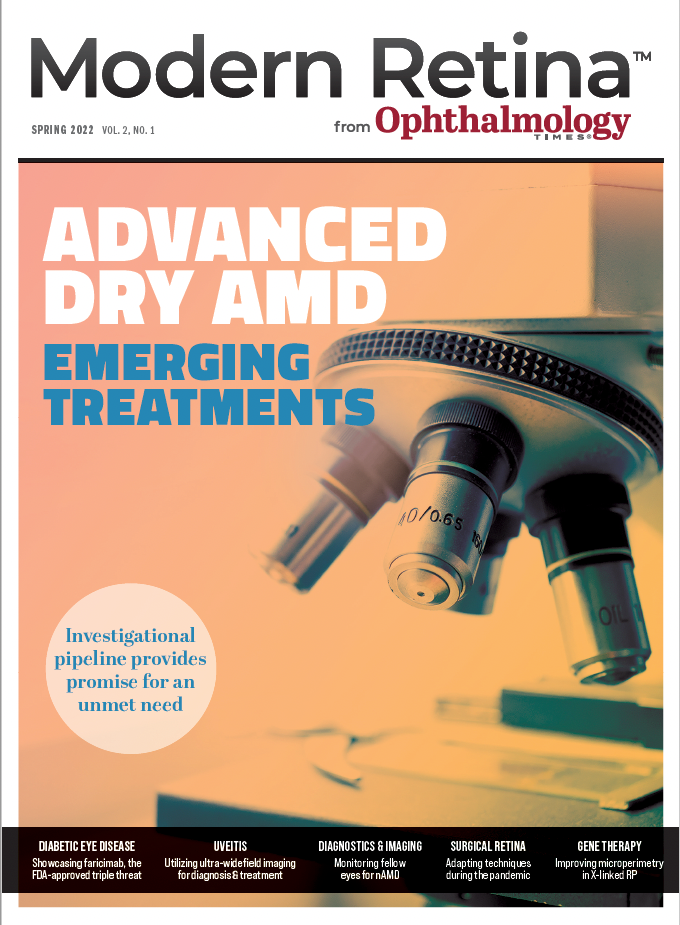PDS ushers in a new era in treatment of wet AMD
The implant achieves impressive efficacy and reduces treatment burden.

The port delivery system (PDS) with ranibizumab (Susvimo; Genentech) has ushered in a new treatment era for patients with wet age-related macular degeneration (AMD). In addition to efficacy, the treatment burden for patients needing monthly anti-VEGF injections is reduced dramatically.
PDS studies
The phase 2 LADDER study (NCT02510794) evaluated the overall safety and efficacy results of the PDS for treating neovascular AMD with 10-mg, 40-mg, and 100-mg concentrations. The results showed that with the highest concentration about 80% of patients went 6 months or longer before needing a refill (median time to refill, nearly 16 months), which was accomplished in the office.
The 2-year, phase 3 Archway study (NCT03677934) compared the PDS containing 100 mg of ranibizumab with monthly ranibizumab injections in patients with recently diagnosed wet AMD. The results found that 98% of patients did not need additional treatment in the PDS group and the drug was well tolerated. The Portal study (NCT03683251), an open-label extension, phase 3 study, will evaluate how patients do after more than 2 years.
Considerations in this new treatment era

“As we embark on this new era for the treatment of wet macular degeneration, it is important that we use all resources available to maximize our patient outcomes,” said Chirag Jhaveri, MD, from Retina Consultants of Austin, Texas, and an investigator at Austin Research Center for Retina. The PDS, approved to treat neovascular AMD, is surgically inserted via the pars plana area in the superotemporal quadrant of the eye to provide continuous slow release of the anti-VEGF drug delivered to the posterior segment.
Picking the surgical candidates is an important step. Although the procedure to insert the PDS is generally well tolerated, a preoperative evaluation is important.
Jhaveri recounted that LADDER found a high rate of vitreous hemorrhages, which was addressed and lowered substantially by adding laser cautery of the corneal bed. Surgeons should also be aware of the infection risk and possible exposure of the device if it is not covered adequately or if the conjunctiva is not closed properly. Because the conjunctiva is thin, erosion may occur. Preoperative evaluation and meticulous care to close the conjunctiva are very important, he stated.
In addition to the conjunctival status, the tissue should have good mobility to facilitate adequate access to the subconjunctival and sub-Tenon spaces. Surgeons should look for areas of potential scleral thinning that can affect creation of the wound and avoid those areas to prevent wound dehiscence or other potential issues. He said patients who are stable on injections each month or every other month without the presence of intraretinal fluid may be good candidates for implantation of the PDS.
Surgical education and training are important for surgeons implanting the PDS. Jhaveri noted that as the device comes into more common usage, it is important to review videos before the PDS is implanted; surgical simulators are available that can provide hands-on experience. In addition, company representatives will be helpful in guiding surgeons through their first surgeries.
Jhaveri said a detailed description of the implantation and the refilling procedure are being approved. Those descriptions and any videos can be obtained by contacting Genentech representatives.
Positive impact of the PDS
In addition to decreasing the treatment burden, the continuous exposure of the retinal tissue to ranibizumab might modify the disease process. Jhaveri said the fact that 98% of the ARCHWAY study participants did not need additional treatment before the first refill may imply that the disease is modified to the point of potential quiescence for some patients.
Another plus is the high patient satisfaction postoperatively; the implantation process is painless and patients may report slight itchiness or mild irritation 1 to 2 days later. “They notice the disease stability after implantation of the PDS. The refill process is also easy for the patients,” Jhaveri said. “It is actually more tolerable because there’s no transscleral penetration of a needle.”
The future of the PDS is bright. “The PDS has a lot of potential for wet AMD,” Jhaveri said, but cautioned that surgeons take advantage of all the resources available regarding the optimal use of the PDS.“ I highly encourage surgeons to use all of the information available and the company representatives to maximize the surgical outcomes.”
Studies are under way to evaluate use of the PDS in treating diabetic macular edema and diabetic retinopathy. “As better compounds are developed that may be more efficacious, such as by specific molecules, marrying the PDS platform with these new molecules may yield even better results for our patients,” Jhaveri concluded.

Newsletter
Keep your retina practice on the forefront—subscribe for expert analysis and emerging trends in retinal disease management.